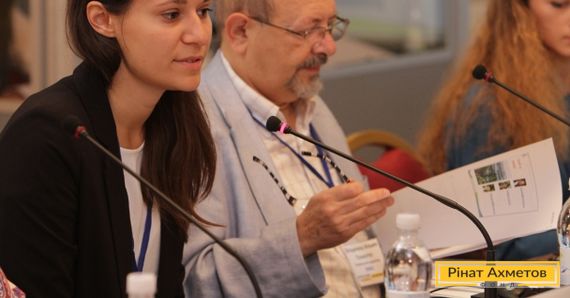Donbas schools: having less students and repairs required – KIIS

The number of students in the educational establishments of Donetsk and Luhansk regions has reduced by quarter, many schools are destroyed due to the military conflict. These data were revealed by Kyiv International Institute of Sociology (KIIS) during the roundtable meeting on "Humanitarian map of Donbas: key requirements, the situation in education and employment sectors", initiated by Rinat Akhmetov Humanitarian Center.
"The general preparation to the new school year is satisfactory vs last year, when many schools did not open on September 1 due to active hostilities, – Daryna Pyrogova, research scientist at KIIS, shared during Humanitarian map presentation. – However, the number of students has reduced by 20-40% at average".
The teaching staff has also significantly decreased, the open positions are substituted by volunteers. But it has no impact on school attendance. Education is one of the main priorities for Donbas residents today.
"Practically all the children of school age (98%) attend school except for kids with special needs. 58% of children go to kindergartens and 93% students of higher educational establishments attend classes. The rest are the students of correspondence departments. Almost all the educational establishments have psychologists, helping children to cope with war trauma. Parents notice emotional instability and fear in children, but unfortunately they find it unnecessary to request help", – Pyrogova emphasized.
The most notable problem in schools is the lack of new textbooks, which is mentioned by 18% of respondents. Studying school subjects according to a new program, children are using old textbooks and materials from the Internet. Besides, parents talk about the lack of money to buy shoes and clothes for schools (39%) and stationery (30%). It cost parents UAH 1700-3000 to get their children ready for kindergarten and about UAH 5000 to have them prepared for school.
The Humanitarian map researches are used by international organizations, such as UNICEF, which is paying considerable attention to educational system across the contact line.
"Thank you for your researches, owing to them we have all the necessary information. We are happy to see the improvements vs the previous year, but certain problems still remain relevant and they require immediate resolution, – Pilar Lenora Robledo, the Coordinator of educational cluster at UNICEF-Ukraine, said during the roundtable meeting. – It is very important that children have certain behavioural knowledge for emergency situations, such as shelling. Mine safety shall also be part of educational program. Children should understand what objects are potentially dangerous and whom to contact in case of emergency situation".
One of remaining key issues is the repair of Donbas educational establishments that were damaged due to hostilities. According to KIIS, many schools and kindergartens had cosmetic repairs done. But there are still some buildings left that require major overhauls.
"According to international organizations, about 100 schools in government-controlled areas and 200 in non-government-controlled territory require repairs. The damages are very various, ranging from broken windows, cracks in the roof and walls and finishing with major overhaul of the whole building, – Natalia Kyiak, Education specialist at UNICEF-Ukraine, shared. – Currently UNICEF is engaged in restoration of 45 schools in government-controlled areas of Donetsk and Luhansk regions in Kramatorsk, Sloviansk, Krasnyi Lyman, Kostiantynivka and Artemivsk districts. But there is a great requirement in repairs at schools to the south of Mariupol, in Volnovakha. That is why we are planning to continue this activity next year".
Note. Humanitarian map of current situation and needs in Donetsk and Luhansk regions was developed by order of Rinat Akhmetov Humanitarian Center and Dopomozhemo TV. The map is based on KIIS sociological research, conducted during September 2-11, 2015. 2,100 respondents have been polled.



